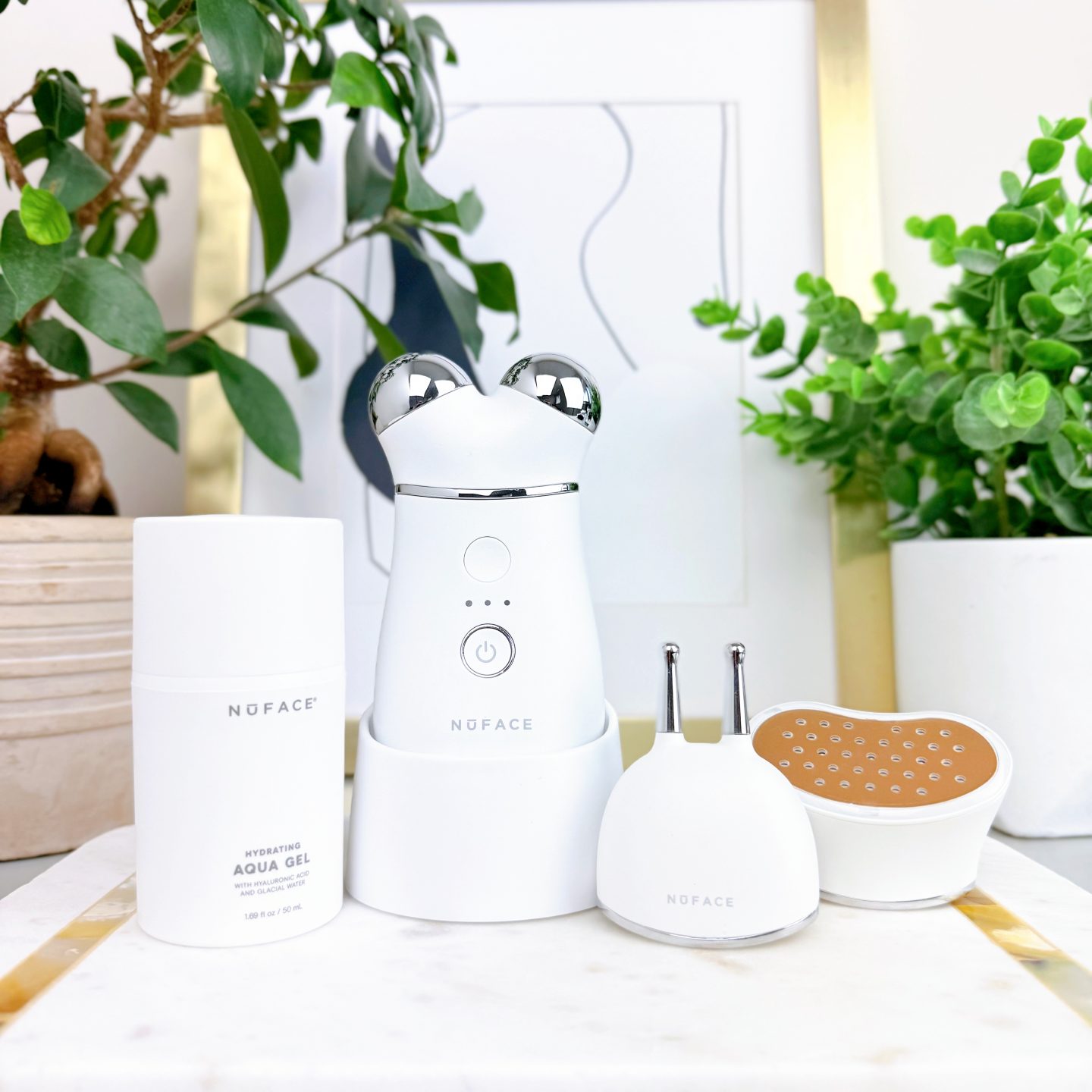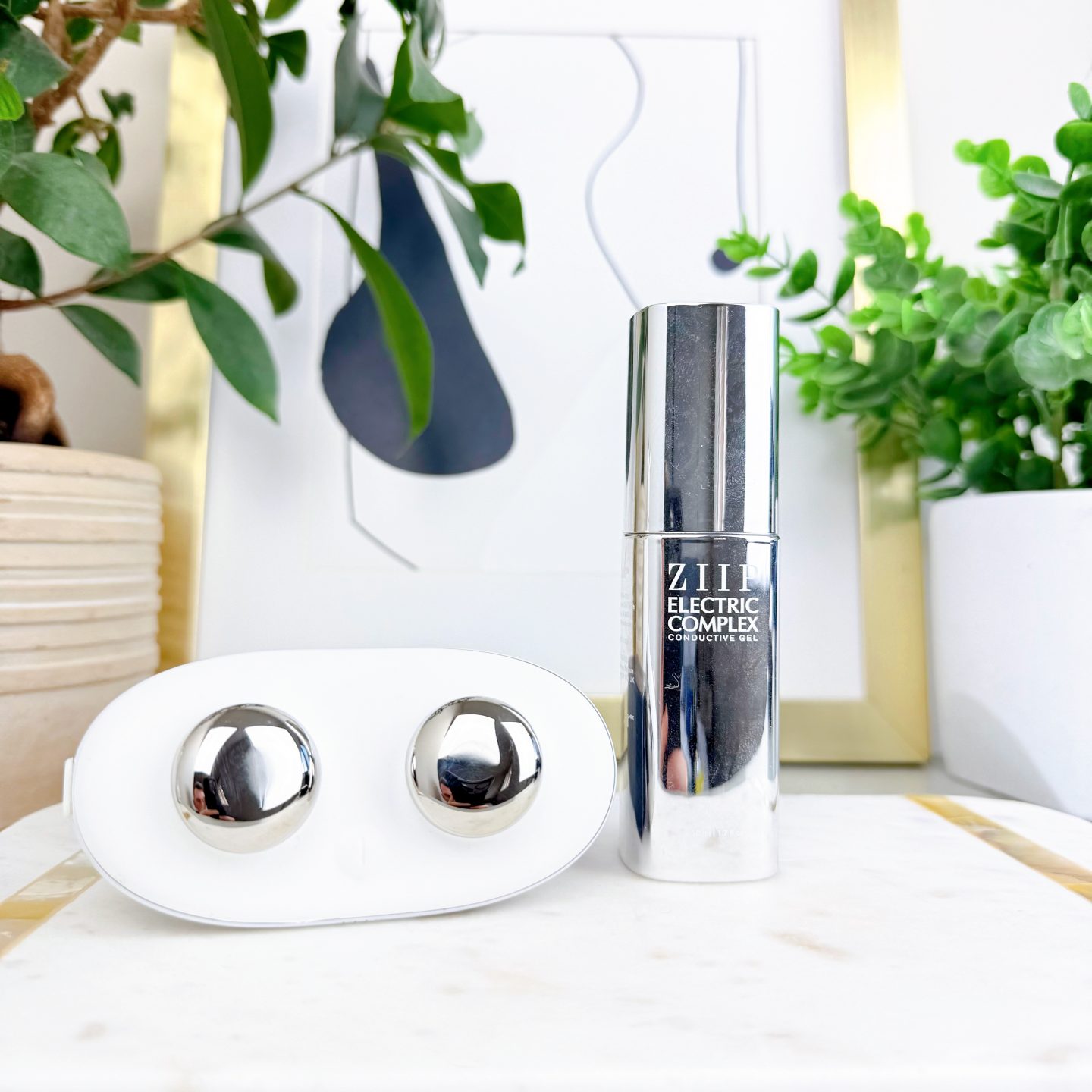
With Black Friday in full swing, I know lots of you are eyeing up skincare gadgets and wondering which ones are genuinely worth the outlay. The ZIIP Halo and NuFace Trinity+ are the two devices that have cornered the market when it comes to microcurrent. Both promise a lifted, more sculpted face without any pain or downtime, so I thought it would be fun to do a little ZIIP Halo vs NuFace review.
I’ve owned and used both so it felt like a good moment to put them side by side. Consider this a straightforward comparison rather than a scientific thesis. Both were gifted to me at various points, but I’ve spent my own money on a NuFace Mini before.
Both devices are incredibly simple. You slather on a conductive gel, then glide the device up and out along the contours of the face. They each come with their own app, complete with guided routines, timers and different treatment modes, if you like a bit of structure.
⚡ NuFace Trinity+
NuFace’s biggest selling point is its modular design. You can pop attachments on and off depending on what you’re working on. The core microcurrent head is for lifting, tightening and general facial toning, and then there’s a smaller Eye & Lip attachment for more targeted work, plus a Red Light Therapy attachment. The latter is handy, though I personally reach for my LED mask instead, because it’s quicker and covers the whole face in one go.
You can adjust the current on the device itself, from a very gentle 70 μA up to 335 μA. It’s also a chunky tool, which for me is a positive. I have big hands and find the size makes it easier to grip and manoeuvre.

⚡ ZIIP Halo
The ZIIP is quite a different proposition. It uses both microcurrent and nanocurrent. Nanocurrent being a much smaller, more cellular-level current designed to help with repair and regeneration rather than simply “training” the muscles. That alone makes it feel a touch more sophisticated, and that you’re getting a little more bang for your buck.
It doesn’t have attachments, so it’s slightly less precise around the eye area if that’s your main concern. Its current runs from 900 nA to 400 μA, which is noticeably stronger than the NuFace when you use them side by side.
The design is much smaller and far more travel friendly, which lots of people love. Personally, because my hands are on the large side, I sometimes find it a bit fiddly to manoeuvre compared with the chunkier NuFace.

⚡ Verdict
If I were buying one with my own money tomorrow, I’d choose the ZIIP Halo. While NuFace gives me subtle improvements and is perfectly decent, the ZIIP delivers more dramatic, visible results on my face. My jawline looks more defined immediately after using it. Not dramatically snatched, but noticeably firmer and more contoured, even to my partner who isn’t exactly known for spotting things like that. The nanocurrent also seems to give me clearer, brighter, more even skin over time, which feels like a bonus on top of the lifting.
That said, whichever one you buy, you must actually use it. No device will work buried in a drawer, waiting for a special occasion. Consistency is the magic ingredient here.
The NuFace is discounted across various retailers over Black Friday week. If you decide to go for the ZIIP, using code SKINT at checkout will get you a 20% discount for Black Friday week only.